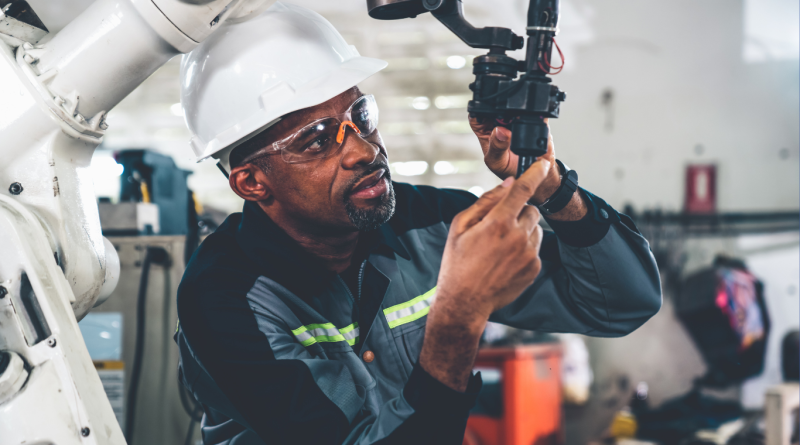5 Key Predictions for Construction Robotics in 2025
The construction industry is entering a transformative era driven by technological innovation, and construction robotics is at the forefront of this shift. As the demand for efficiency, sustainability, and safety increases, robotics technology is revolutionizing the way we build.
By 2025, construction robotics is expected to become a cornerstone of the industry, setting new standards for precision, cost-effectiveness, and safety. We explore five key predictions for how robotics will impact construction, providing a glimpse into the future of smarter, faster, and safer building processes.
1. Increased Adoption of Autonomous Machines
The adoption of autonomous machines in the construction industry is set to surge in 2025. Autonomous construction vehicles—such as excavators, bulldozers, and concrete mixers—are capable of operating without direct human intervention, increasing efficiency and safety.
According to research by Trimble, a leader in construction technology, autonomous machines will move from pilot phases to widespread on-site implementation by 2025. The integration of GPS systems, LiDAR, and IoT sensors allows these machines to execute precise tasks like grading, excavation, and material transportation.
Key benefits include:
- Higher Productivity: Autonomous machines work 24/7 without fatigue, reducing project timelines.
- Improved Safety: Automation minimizes risks in dangerous environments.
Major companies such as Caterpillar are already leading the charge, with fully autonomous machinery now being tested on construction sites globally. By 2025, autonomous construction equipment is expected to become an industry standard rather than a novelty.
2. AI and Machine Learning Transforming Robotics
Artificial Intelligence (AI) and Machine Learning (ML) are revolutionizing construction robotics by enabling machines to become smarter, adaptive, and capable of learning from real-world data. These technologies empower construction robots to make better decisions, optimize workflows, and predict challenges in complex environments.
For instance:
- AI-powered robots can analyze site conditions, detect obstacles, and autonomously adjust their behavior.
- Machine Learning algorithms help robots identify patterns and improve performance over time.
Companies such as Built Robotics are already integrating AI to boost robotic functionality, setting the foundation for widespread adoption by 2025.
3. Growth of Robotics in Prefabrication and Modular Construction
Prefabrication and modular construction methods are gaining traction as the industry looks for solutions to reduce timelines and costs. Robotics will play a pivotal role in automating the off-site assembly of building components, ensuring precision, efficiency, and quality control.
Key drivers include:
- Labor Shortages: Robots reduce reliance on skilled labor, which is in short supply globally.
- Speed and Accuracy: Automation speeds up prefabrication processes while minimizing human errors.
For example, robotic arms and automated machines can weld, cut, and assemble materials in controlled factory settings before delivering them to construction sites.
Companies like Skanska are leading the way in integrating robotics into prefabrication processes, showcasing how automation will dominate off-site construction by 2025.
4. Robotics for Safety and Risk Mitigation
Safety remains one of the most critical concerns in construction, and robotics will be at the forefront of addressing these challenges. From hazardous tasks like demolition and excavation to high-risk inspections, robots are becoming vital tools for risk mitigation.
Notable examples include:
- Drones: These are used for aerial inspections of unsafe structures, providing real-time data without endangering workers.
- Automated Machines: Robots like demolition bots take on dangerous tasks such as tearing down unstable buildings.
According to a report by the Occupational Safety and Health Administration (OSHA), robotics could reduce on-site construction accidents by 40% by 2025. Robots minimize human exposure to high-risk environments, allowing workers to focus on safer, more strategic tasks.
This shift toward robotics-driven safety solutions ensures that construction sites are not only more efficient but also significantly safer for workers.
5. Market Growth and Investment Trends
The construction robotics market is on a steep upward trajectory, with projections indicating rapid growth over the next few years.
Factors fueling this growth include:
- High ROI: Robotics offer long-term cost savings and higher productivity.
- Sustainability Goals: Robots optimize material usage, reducing waste and promoting sustainable practices.
Major players such as ABB Robotics are already investing heavily in R&D to meet the increasing demand for automated solutions. By 2025, construction firms that adopt robotics early are expected to outperform competitors, both in cost-efficiency and project delivery speed.
The construction industry is on the brink of a technological revolution, and robotics will play a central role in shaping its future. From autonomous machines to AI-powered solutions and safety-enhancing robots, these innovations promise to redefine productivity, safety, and efficiency in construction by 2025.
